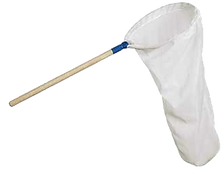Meeting November 17th: Monarch butterfly biology, ecology, and conservation needs
- ctentsoc
- Nov 14, 2023
- 2 min read
We will have a regular meeting on Friday, November 17th at the Jones Auditorium at the Connecticut Agricultural Experiment Station, 123 Huntington St., New Haven. We gather at 6:30 p.m. for refreshments, the business meeting starts at 7:30, and the meeting's program starts at 8 p.m. A Zoom link will be provided for those who wish to attend virtually - please email ctentsoc@gmail.com for the link.
Our speaker this month is Dr. Kelsey Fisher, Vice President of the CES and one of the new scientists working at the CAES. She will be giving a presentation titled "Monarch butterfly biology, ecology, and conservation needs".
Talk Abstract: The monarch butterfly population east of the Rocky Mountains has been in decline for the past three decades. Among many other reasons, this decline is attributed to the loss of habitat containing milkweed, the monarchs' obligate host, because of urbanization and land conversion for agriculture production. As people think about establishing monarch habitat to support this species, several practical questions must be considered: 1) where should we plant habitat, 2) what should we plant in addition to milkweed, 3) what milkweed density should we include, and 4) how should we maintain the habitat? In this presentation, I will discuss previous and ongoing research that helps provide biologically-relevant solutions for these practical questions.
Dr. Fisher's Bio: Dr. Kelsey E. Fisher is an Assistant Agricultural Scientist II in the Entomology Department at the Connecticut Agricultural Experiment Station. Kelsey served as a Postdoctoral Research Associate at Iowa State University (ISU) under the guidance of Steven P. Bradbury from 2021-2022. She earned her PhD in Entomology from ISU in 2021 where she studied monarch butterfly conservation, MS in Entomology from the University of Delaware in 2015 where she studied European corn borer management, and BS in Biology from Widener University in 2013. Kelsey is an agricultural entomologist and insect movement ecologist. Her research focuses on discerning animal movement patterns and space use in fragmented landscapes to understand movement and dispersal behavior of insect species at various spatial scales. Kelsey employs multiple research methods in the field, greenhouse, and lab to address research questions related to management of pest insects and conservation of beneficial species, including radio telemetry, population genetics, stable isotope analysis, geospatial analyses, and spatial modeling. Understanding movement and how space is used are fundamental to advancing pest management, natural resource management, and conservation programs.
We hope to see you at the meeting!
















